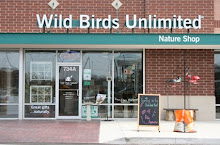Assess your yard. A diverse habitat encourages a variety of birds. Plant bushes that will produce berries next year to attract fruit-eating birds.
Inventory your feeders. In addition to hopper feeders and seed tubes, consider adding a peanut or suet feeder to your yard. Suet and peanuts are high in fat which provides energy and helps birds stay warm in the winter.
Clean your feeders with a solution of one part bleach and nine parts water. Rinse thoroughly.
Put up a window feeder to bring birds even closer during the fall and winter.
Offer water to attract migratory birds. As temperatures drop, it is important to provide an open source of fresh water for the birds.
When temperatures drop, protect all birdbaths made from porous materials. Protect the bowl with a plastic cover and store. Replace it with a plastic birdbath bowl or a heated birdbath.
Watch for fall migrants. Keep optics and a field guide on hand for quick identification.
Once hummingbird migration has ended in your area, take down your feeder, clean and store.
Have children help you prepare to feed the birds. Early involvement in birdfeeding can instill an appreciation for nature and grow into a life-long hobby. Get involved in Project Feeder Watch and help scientists track broadscale movements of winter bird populations and long-term trends in bird distribution and abundance.
Already providing food, water, cover and places to raise young in your yard? Consider certifying your yard with the National Wildlife Federation®. Certification packages are available at our store.
Tuesday, October 28, 2008
Subscribe to:
Posts (Atom)
